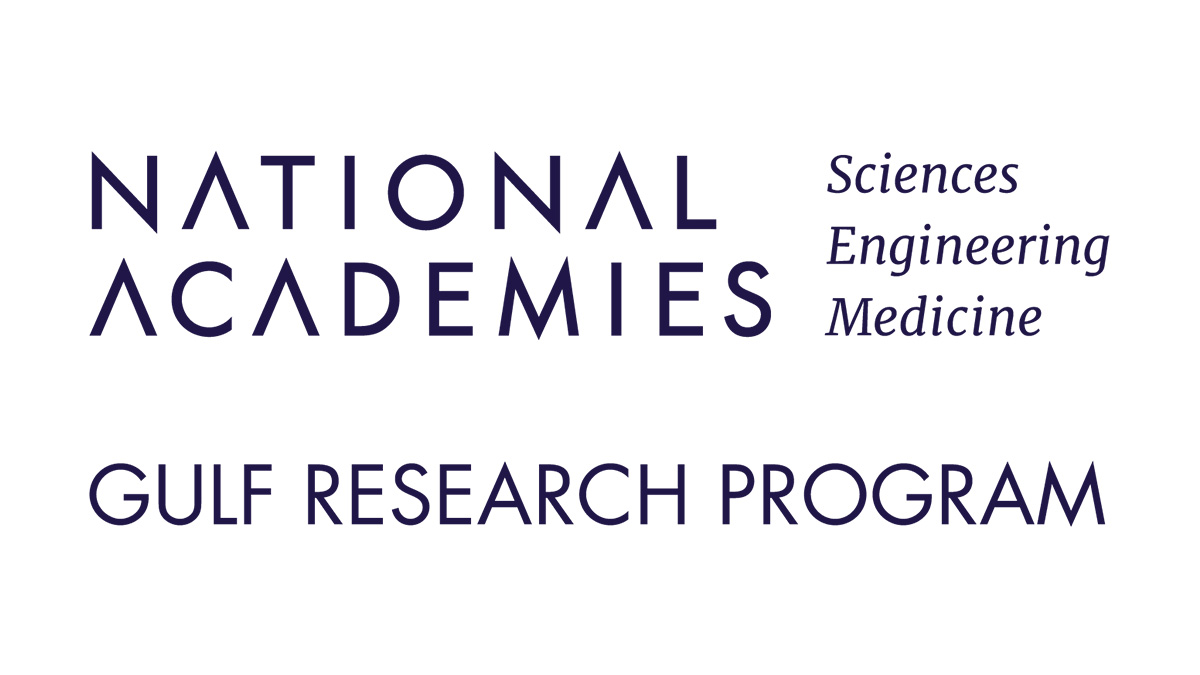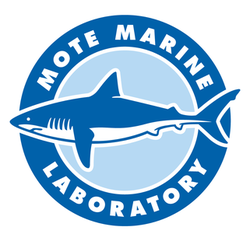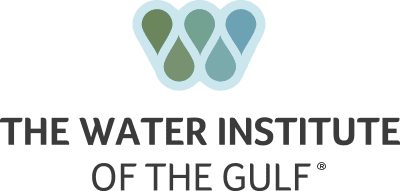Current Projects

A promising Florida Red Tide control strategy: combining stakeholder input and benthic surveys to evaluate impacts of clay flocculation.
The human and environmental health impacts alone warrant careful consideration of new and viable red tide (Karenia brevis) harmful algal bloom (HAB) control strategies, however bloom control is arguably the most challenging and controversial aspect of HAB management, given the myriad of stakeholders involved, and is perhaps the least developed of all areas of HAB science. In this study we aim to build on previous and current research efforts to evaluate the efficacy and safety of clay flocculation as a red tide control strategy. While reduction of the visible and acute toxic impacts to both humans and charismatic megafauna are the primary goals of red tide control, it will be imperative to understand how the clay will impact the system from molecular to macro levels. The clay and toxin deposition will likely alter the benthic microbial and infaunal communities and given their known importance in nutrient regeneration as well as toxin degradation, these impacts must be quantified to provide insight as to the efficacy of this control strategy. It is unknown if the clay treatments will cause major alterations of marine microbial communities, which can lead to dysbiosis (imbalance) severely affecting nutrient cycling and nutrient availability. This system imbalance can have devastating consequences to aquatic ecosystems. We also have little information on how the clay and clay-Karenia flocs that settle on the marine sediments affect the infaunal and macrobenthic communities, the foundation of the marine food web. In short, we are lacking quantitative data of how the clay alone (and with Karenia present) impacts the physical environment and biological communities at the trophic levels responsible for supplying energy and organic matter to rest of the food web. Without detailed information on the marine chemistry, microbial communities, and infaunal/macrobenthic communities, local and state agencies will lack the complete understanding of the efficacy and environmental safety of this mitigation strategy.

2021 – 2025 Despite routine application in Asia, clay flocculation technology to control harmful algal blooms has not been adopted in the US, largely because of the lack of data on US ecosystems and species. This project will assess the effectiveness, environmental acceptability, socio-economic costs, and scalability of modified clay dispersal as a red tide (Karenia brevis) bloom control strategy. Initial laboratory, mesocosm and open water demonstration studies will guide larger-scale field trials. Project objectives are to: 1) assess the effects of dissolved organic matter on clay flocculation and modify clay chemistry as necessary to improve flocculation in Florida waters; 2) assess the effectiveness and impacts of clay flocculation in laboratory and mesocosm studies; 3) conduct field trials using a tiered approach at increasing spatial scales and across different ecosystems; 4) assess the overall effectiveness, feasibility, impacts, scalability, and acceptability of clay as a Karenia bloom control strategy; and 5) assess the socio-economic costs and benefits of clay treatment at several scales. The last objective balances bloom control costs against the values of water quality improvements and reductions in aerosolized toxins and wildlife mortalities.

The New First Line of Defense: Building Community Resilience through Residential Risk Disclosure Resilience
2019 – 2023: The first line of defense for residents and their resilience is housing protected from natural hazard impacts. Yet many residents remain unaware that the building codes and zoning regulations they expect to protect them become outdated as environmental stressors, local development patterns, materials science, and construction practices change. Improved residential risk disclosure is a key component for building resilient communities. To make informed decisions about where to live and how to protect housing investments, residents require knowledge about potential natural hazard exposure and impacts along with available mitigation strategies. This project aims to advance community resilience by improving people’s understanding of risks and their willingness to undertake hazard mitigation when choosing where they live. The project team will work with communities throughout the Gulf region to test strategies for dissemination and uptake of information on disaster risk and mitigation alternatives. The ultimate goal is to identify practices most likely to result in residents taking actions to reduce risk and increase resilience.

Fate and effects of Karenia brevis cells, toxins, and nutrients following clay application for bloom control
2020 – 2022: As part of the new red tide mitigation initiative, Mote is building a dedicated red tide mesocosm facility that will include 24 5’x4’ tanks and 12 10’x5’ round tanks. The mesocosms include flow-through or stagnant water capability (using natural seawater), dual heat exchange temperature control, and networked control. The approach to be taken in this proposed project will rely heavily on the new mesocosm facility, utilizing tanks that can be used with natural sediments. The mesocosms for this set of experiments will contain a mix of washed siliceous medium to fine grain sands mixed with commercial crushed coral granules to maintain pH balance. Use of a known substrate, rather than naturally sourced sediments has the advantage of not complicating the chemistry, pH, BOD, and introducing potential pathogens, present in natural substrates. Benthic organisms will include local economically important species to the Florida gulf coast that have been heavily impacted by red tide.
Past Projects

Panacea or Pandora’s box: coastal restoration and recreational fishing livelihoods in salt-marshes of coastal Louisiana
2020 – 2022: The proposed project will incorporate empirical data, citizen science, ethnographic interviews, and modeling techniques to understand the effects of freshwater inputs (via anthropogenic and natural diversions) into salt marsh ecosystems and how those activities, in turn, affect behaviors and livelihoods of the recreational fishing industry. To date, studies focusing on recreational fishing in salt marshes of Louisiana have concentrated on one or a few components of the many potential sources for change, and usually, only consider a unidirectional view of human activities on salt marshes. In contrast, this proposed project will improve our understanding of how natural processes and human activities interact to influence salt marsh ecosystems; that provide key ecosystem services that support the recreational fishing industry’s livelihoods.

2016 – 2021: NOAA’s Center for Sponsored Coastal Ocean Research funded three projects under the NGOMEX 2016 funding cycle. Information and progress on one of these projects, led by Kim de Mutsert, is posted on this webpage. The main goal of this project is to integrate physical, biological, bioenergetics, and ecosystem models to address how changes in nutrient loads from the Mississippi River affect fish and fisheries in the northern Gulf of Mexico, develop practical management tools based on these linked models, and deliver those to managers and stakeholders. Regular meetings with an advisory panel and stakeholders are included in the project to facilitate the transition of information and tools to decision makers.

Modeling Lagoon Ecosystem Health over Deep Time: Developing New Methods through Convergent Research in the Indian River Lagoon, FL
2020 – 2021: This interdisciplinary research project is aimed at understanding changes in the socio-environmental system of the Indian River Lagoon (IRL) in the Holocene Epoch (started at 10,000 years ago), with a particular focus on the past 2000 years in Mosquito Lagoon. Our research team consists of natural and social scientists in the fields of archaeology, ecology, geology, hydrology, and political science who had initially formed a collaboration to tackle similar issues at a lagoon on the Pacific coast of Mexico. When fieldwork and travel to Mexico were postponed indefinitely due to the Covid-19 pandemic, the largely UCF-based team decided to transition our focus to Florida because several members had existing data sets collected in or around the IRL. Our long-term goals for the project include: 1) documenting geological, hydrodynamic and ecological change in the Mosquito Lagoon, North IRL, and Banana River regions; and 2) evaluating the ways in which adjacent human populations have both generated and responded to these changes. It is our hope that our results will ultimately provide valuable context for informing future management decisions by extending our understanding of this unique ecosystem into the distant past.

From Planning to Adaptive Management: Natural Resources Decision Making in Response to the Allocation of Riverine Inflows in the Northern Gulf of Mexico
An estimated 79 to 92% of all freshwater, with the associated sediments and nutrients, enters the Gulf of Mexico (GOM) from the Mississippi River system (MR). These riverine inflows are a foundational driver to the system and without fully understanding the effects of the inflows, it has proven challenging for federal agencies to properly prioritize funding towards effective restoration projects to adaptively manage natural resources (NR) or to mitigate for undesirable impacts such as hypoxia, high turbidity and harmful algal blooms (HABs) from freshwater releases. Managing the northern GOM is complicated due to limitations in understanding the sources and pathways of riverine waters. To address these issues, our transdisciplinary project team will focused on two related NR Management Decisions: a) Guide the prioritization of funding, siting and design of proposed restoration projects and incorporation of adaptive management strategies by enhancing managers’ systemic understanding of the critical influences of riverine inflows and their impacts on oysters, marine mammals, marsh creation, and other natural resources; b) Guide the management of allocations of riverine inflows to optimize the natural resources of the northern GOM while recognizing the societal constraints of flood risk management and navigation. Key uncertainties impacting these NR decisions include “knowledge” and “decision” uncertainties and the interplay between them. Adaptive management in a participatory process as used in this study was an effective strategy to clarify and reduce decision uncertainties among all stakeholders.

2017 Louisiana Coastal Master Plan: Fish and Shellfish Ecosystem Model development
Coastal wetland loss in Louisiana between 1932 and 2016 was close to 5,000 km2. To mitigate this catastrophic decline, coastal protection and restoration projects are being planned and implemented by the State of Louisiana. The Louisiana Coastal Master Plan is an adaptive management approach updated every 5-7 years that provides a suite of projects that are predicted to build or maintain land and protect coastal communities. Restoring the coast with this 50-year large-scale restoration and risk reduction plan has the potential to change the biomass and distribution of economically and ecologically important fisheries species in this region and disrupt entire coastal communities. This research directly supported this adaptive management plan and provided critical insight into which communities were most vulnerable to climate change driven disturbances. We developed an ecosystem model to evaluate the effects of plan implementation versus a future without action on the biomass and distribution of fisheries species in the estuaries over 50 years of model simulations. By simulating effects using a spatially explicit ecosystem model, managers were able to evaluate both the biomass and distribution of species in response to the planned projects. Providing a range of outcomes to managers allows for a precautionary approach to ecosystem management and adaptation. (Funding: Louisiana Coastal Protection and Restoration Authority (CPRA), De Mutsert et al. 2021).

LCA Mississippi River Hydrodynamic and Delta Management Study: Using ecosystem modeling to evaluate trade-offs in coastal management: effects of large-scale river diversions on fish and fisheries.
A coupled ecosystem modeling approach was used to evaluate how select combinations of large-scale river diversions in the lower Mississippi River Deltaic Plain may affect the distribution, biomass, and landings of fish and shellfish over decades relative to a future without action. These river diversions are controlled openings in the riverbank of the Mississippi River designed to reintroduce sediment, water, and nutrients into hydrologically isolated coastal wetlands in order to mitigate wetland loss. We developed a spatial ecosystem model using EwE software, and prepared it to receive output from a Delft3D hydrodynamic model coupled to primary production models. The Delft3D model provided environmental drivers including salinity, temperature, Chl a, total suspended solids, and change in wetland cover as a result of simulated river diversions over decadal model runs. Driver output was averaged either daily, monthly, or annually depending on the parameter. A novel oyster-specific subroutine is introduced in this paper to incorporate information at daily intervals in Ecospace, while Ecospace runs on a monthly time step. The ecosystem model simulates biomass and distribution of fish and shellfish species, and landings of targeted fisheries species, as a result of environmental changes projected for a preliminary set of management scenarios designed to evaluate and screen select combinations of river diversions. Abundant local field samples and landings data allowed for model calibration and validation. The results of simulations indicate that inflow of Mississippi River water in estuaries may cause local shifts in species assemblages. These changes were in some cases direct effects of decreased salinity, such as locally reduced Spotted Seatrout biomass. Changes in some other species in the affected areas resulted from indirect effects; for example, reduced Chl a (as a result of increased TSS) resulted in near-field reductions of Gulf Menhaden. The simulations also showed that local biomass reductions were mostly the result of redistribution, since the scenario with the proposed diversions open had minimal impact on the total biomass or landings of species simulated in the Mississippi River Delta as compared to a future without action. The model and its output were used as a decision support tool to help evaluate and compare alternative management actions. The results of this study played a role in the decision by the Coastal Protection and Restoration Authority to prioritize moving forward to conduct more detailed analyses through engineering and design of the two middle diversions but not the two lower diversions that were tested in this study.
Multiple Ecosystem Model Integration for use in Environmental Impact Studies.
In two separate but complementary projects in 2018 and 2022, state resource managers asked our team of modelers to use a multiple ecosystem model approach to evaluate the potential impacts of two proposed sediment diversions in coastal Louisiana. For consideration in the environmental impact statement to the Joint Permit Applications to the Department of the Army, these projects provided context to decision-makers for assessing possible basin-scale impacts on fish and shellfish resources of these large-scale restoration projects. The use of multiple models in a coordinated but not overly constrained way, as demonstrated in both of these projects, provided a significant step toward co-production of knowledge for use in resource management decisions. (Funding: Louisiana CPRA, Lewis et al. 2021, De Mutsert, Lewis et al. 2022).

A coupled ecological (EwE) and economic (IMPLAN) model to evaluate large-scale oyster restoration projects in the Chesapeake Bay (2017 – 2018).
Maryland is currently developing the first stock assessment of the oyster population for state waters. Consequently, there is a current need to provide resource managers with the trade-off information on the ecosystem services provided by different possible management options. This work explores those options by simulating a range of management options for oysters, using an ecosystem model (Ecopath with Ecosim, EwE) of the Harris Creek Oyster sanctuary, and then linking those results to an economic model (IMPLAN) that estimates the economic impacts resulting from each modeled management scenario. Our goal is to provide Chesapeake Bay fishery managers with useful metrics to support decision-making for the oyster fishery. Collaborators include coastal ecologists, fisheries scientists, natural resource economists and managers from both the state and federal levels.
